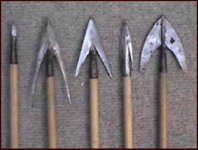fmethorst
Command Sergeant Major
- Joined
- Feb 18, 2008
- Messages
- 2,444
I just finished reading the fiction title "Azincourt" (French spelling) by Bernard Cornwell (ISBN 9780007273713) and I was impressed with it's brutal depiction of this period in history. It reminded me of Juliet Barker's excellent non-fiction title "Agincourt, The King -The Campaign - The Battle". (ISBN 034911918X).
The French defense of Harfleur, blockage of the ford at Blanchetaque and subsequent shadowing along the Somme was masterful so their terrible performance on the field of battle at Agincourt continues to be astounding. While much credit has been given to the English archers I think the defeat really has to be placed at the feet of French leadership. Unlike the English under Henry V the French lacked unified leadership. The choice of battlefield was completely unsuitable for the large French army. A freshly plowed field coupled with heavy rain ensured heavily encumbered men at arms would be exhausted by any movement and unable to fight properly. Henry was allowed to deploy with woods on either flank ensuring the French could not take advantage of their superior numbers. The French deployed their crossbowmen behind their men at arms thus negating them from the battle. Lastly the French failed to take advantage of the English move from their initial deployment position to the new position within longbow range.
It got me thinking about the English longbow or more accurately warbow. There is considerable debate about the armor penetration ability of this weapon. I have seen a variety of tests showing armor defeating arrows yet I find it difficult to believe Henry would have brought so many archers if the weapon was ineffective. I think part of the problem is the confusion between the Victorian recreational longbow and the medieval warbow. The main difference being draw weight with recreational bows having draws around 80lbs and warbows having draws around 140lbs. I also think the effect of the "arrow storm" is often overlooked. 5000 archers firing 60000 arrows a minute must have been terrifying. The effect on mounted men at arms would certainly have been devasting as the horses would have been vulnerable even at long range. As the range shortened I suspect the "arrow storm" would start to have an effect on unmounted men at arms. There were vulnerable points on a medieval suit of armor plus most men would have had to make due with lower quality armor as the highest quality Milanese or German plate was prohibitively expensive for most. At very least the French had to keep their visors closed which would have dramatically reduced their ability to see.
It is interesting to note as well that the archers likely used up all their arrows in a matter of minutes which meant they would have faced French men at arms who were trained in hand to hand combat while they were not (at least not to great extent). How they survived must have something to do with the poor footing on the field of battle.
The French defense of Harfleur, blockage of the ford at Blanchetaque and subsequent shadowing along the Somme was masterful so their terrible performance on the field of battle at Agincourt continues to be astounding. While much credit has been given to the English archers I think the defeat really has to be placed at the feet of French leadership. Unlike the English under Henry V the French lacked unified leadership. The choice of battlefield was completely unsuitable for the large French army. A freshly plowed field coupled with heavy rain ensured heavily encumbered men at arms would be exhausted by any movement and unable to fight properly. Henry was allowed to deploy with woods on either flank ensuring the French could not take advantage of their superior numbers. The French deployed their crossbowmen behind their men at arms thus negating them from the battle. Lastly the French failed to take advantage of the English move from their initial deployment position to the new position within longbow range.
It got me thinking about the English longbow or more accurately warbow. There is considerable debate about the armor penetration ability of this weapon. I have seen a variety of tests showing armor defeating arrows yet I find it difficult to believe Henry would have brought so many archers if the weapon was ineffective. I think part of the problem is the confusion between the Victorian recreational longbow and the medieval warbow. The main difference being draw weight with recreational bows having draws around 80lbs and warbows having draws around 140lbs. I also think the effect of the "arrow storm" is often overlooked. 5000 archers firing 60000 arrows a minute must have been terrifying. The effect on mounted men at arms would certainly have been devasting as the horses would have been vulnerable even at long range. As the range shortened I suspect the "arrow storm" would start to have an effect on unmounted men at arms. There were vulnerable points on a medieval suit of armor plus most men would have had to make due with lower quality armor as the highest quality Milanese or German plate was prohibitively expensive for most. At very least the French had to keep their visors closed which would have dramatically reduced their ability to see.
It is interesting to note as well that the archers likely used up all their arrows in a matter of minutes which meant they would have faced French men at arms who were trained in hand to hand combat while they were not (at least not to great extent). How they survived must have something to do with the poor footing on the field of battle.


